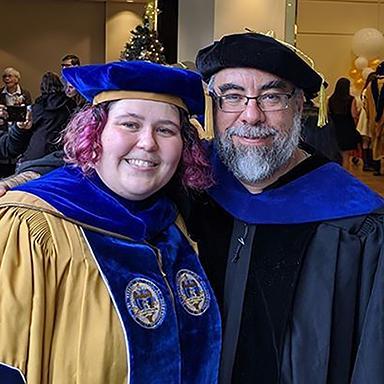Georgia Tech Physicists Expand Access to Biophysics Research
Dec 17, 2019 — Atlanta, GA

Students who want to study complicated biophysics problems used to have to rely on pricey supercomputers. A new paper from School of Physics researchers promises a less expensive, more hands-on approach.
Thanks to advances in microcontrollers — powerful, integrated single chips — students will be able to simulate biophysical phenomena such as the movement of electric waves, including the spiral waves emanating from cardiac tissue.
“It is another way to visualize and interact with different biophysics equations” says Professor Flavio Fenton.
Biophysicists apply the methods of physics to study biological systems. Because those systems can be complex, scientists rely on computational simulations to study them. Before the rise of microcontrollers, students had to use simulations and visualizations from high-end computers.
“However, due to advances in microcontrollers, it is now possible to run what once were considered large-scale simulations using a very small and inexpensive single integrated circuit that can furthermore send and receive information to and from the outside world in real time,” Fenton and others say in the paper “Simulating waves, chaos, and synchronization with a microcontroller.” Published on Dec. 9, 2019, in the journal Chaos, the work was supported in part by grants from the National Institutes of Health and the National Science Foundation.
The paper’s first author, new Ph.D. graduate Andrea Welsh, says the work would be of interest to non-expert audiences because it includes instructions on setting up the microcontroller, along with different visualization methods. All of these items are inexpensive, and the software code to use them is provided in the paper.
“Science enthusiasts, educators, and hobbyists can do these simulations at home or in the classroom while also learning about the biophysical problems,” Welsh says. “The interactive part is the interesting part or me. Users can learn about phenomena such as wave collapsing, period doubling, and spiral waves by stopping and initializing waves at different times and in different places.”
“The paper is more of a teaching tool to start undergraduate and graduate students to be familiarized with microcontrollers and learn how to use them so they can extend them to other problems,” Fenton adds. “We show how simple and inexpensive it is to program microcontrollers and demonstrate their use in solving biophysical problems.” He cites two examples from the paper: How certain fireflies sync their flashes, and how electric waves spread from heart tissue.
Renay San Miguel
Communications Officer II
College of Sciences
404-894-5209




